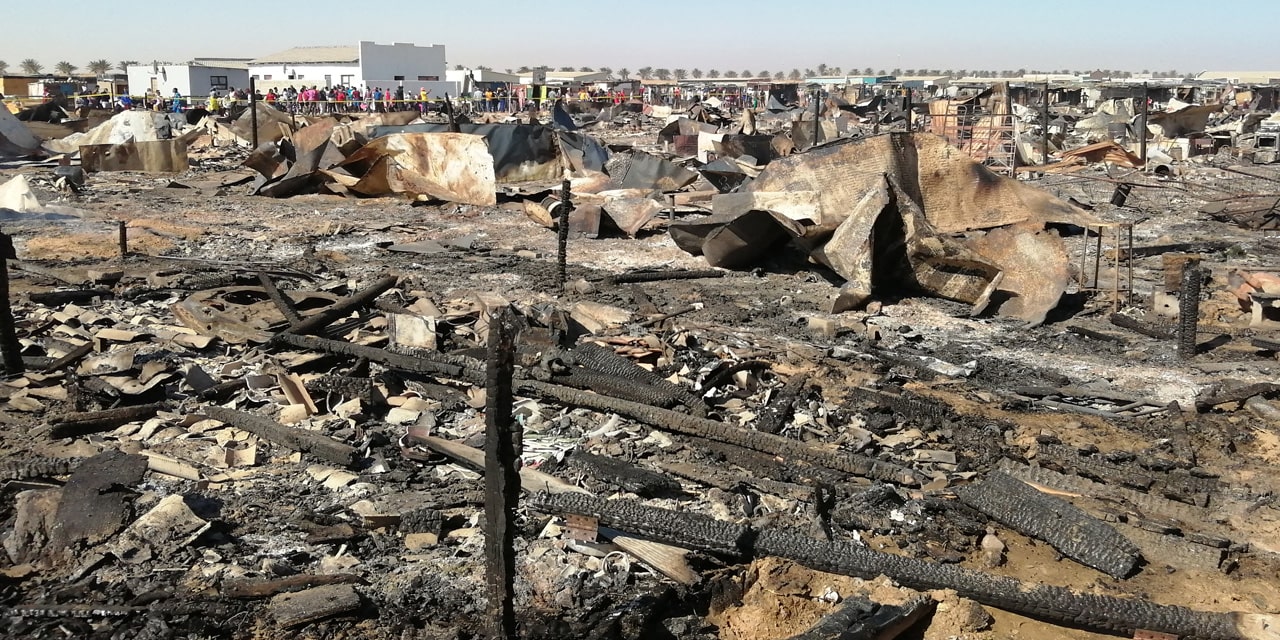Helena Johannes
Information minister, Peya Mushelenga has announced that Cabinet has given the municipality of Walvis Bay until the last week of October to ensure the occupation of housing units which were allocated to Twaloloka beneficiaries.
Mushelenga said Cabinet has mandated the Ministry of Urban and Rural Development to oversee the implementation of the relocation of programme, supported by the Walvis Bay municipality and the office of the Governor of the Erongo Region.
“The Cabinet is in line with sourcing of service providers on an emergency basis to implement the project, while the beneficiaries would contribute to the construction of housing by providing free labour,” he said.
This comes after the Walvis Bay mayor Immanuel Wilfred said the development will cost government N$20 million to allocate and service temporary land for the fire victims.
Mushelenga, however, revealed that only N$15 million had been made available by the government.
“Cabinet has directed the Minister of Urban and Rural Development in partnership with the Ministry of Finance and the Office of the Prime Minister to ensure cost effectiveness, and that the project is implemented within the allocated funding amount of.The ministry of Urban and Rural Development is however urged to provide updated reports on the implementation of the Twaloloka project to the Prime Minister, through the National Disaster Risk Management Committee,” he said.
“The Ministry of Urban and Rural Development is also in collaboration with other relevant stakeholders are urged by the Cabinet to expedite the completion of other housing projects across the country, which include the 500 plots of land surveyed at Farm 37 in Walvis Bay.”
Mushelenga said coordination of the identification of 201 qualifying beneficiaries are to be drawn from Twaloloka as part of the decongestion plan by the Erongo Governor’s office. The units should be occupied by the last week of October.
“The cabinet proposed each ERF to be zoned 300 square meters in size and the design of each individual housing unit should provide for an open plan size of 26 square meters with water, toilet and shower,” he said.
However, he added that only non-corrugated iron or Inverted Box Rib (IBR) sheets alternative construction materials are to be considered.
This follows government reportedly handing over 33 shacks without toilets and showers to the community of Kavango West Region low income earners recently at a cost of N$1.4 million a decision which has been criticized by many.
This also comes after the Shack Dwellers Association of Namibia (SDFN) has said nearly 1 million Namibians live in shacks across the country, amounting to about 40 percent of Namibians living in about 228,000 shacks in countrywide.
The shocking fire tragedy of Twaloloka left over 1,000 people homeless and a child dead after over 240 shacks were burned to ashes on July 26 this year.
Walvis Bay Mayor Immanuel Wilfred previously told the Windhoek Observer that the town has over 16,000 “squatters.”




